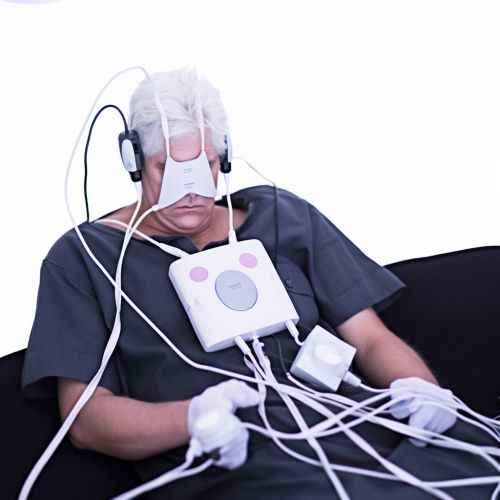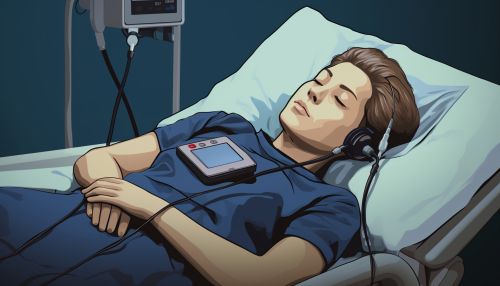Polysomnography
Overview
Polysomnography, also known as a sleep study, is a type of test used in the study of sleep and as a diagnostic tool in sleep medicine. The test is a comprehensive recording of the biophysiological changes that occur during sleep. It is usually performed at night, when most people's main sleep period is.
History
The history of polysomnography dates back to the early 20th century, when the first sleep studies were conducted using primitive tools and techniques. Over the years, the technology and methods used in polysomnography have evolved significantly, leading to more accurate and detailed results.
Procedure
A typical polysomnography test involves the patient sleeping overnight at a sleep center, where various physiological parameters are monitored and recorded. These include brain waves, eye movements, heart rate, and blood pressure, among others. The data collected is then analyzed by a sleep specialist to diagnose any potential sleep disorders.
Indications
Polysomnography is often indicated for patients who exhibit symptoms of sleep disorders such as sleep apnea, insomnia, restless legs syndrome, and narcolepsy. It can also be used to evaluate the effectiveness of treatments for these disorders.
Interpretation
Interpreting the results of a polysomnography test requires specialized knowledge and expertise. The data collected during the test is used to identify various sleep stages and to detect any abnormalities that may indicate a sleep disorder.
Risks and Complications
While polysomnography is generally considered safe, there are potential risks and complications associated with the test. These include discomfort from the electrodes and other monitoring devices, and anxiety or difficulty sleeping in the unfamiliar environment of the sleep center.
Future Directions
The field of polysomnography continues to evolve, with ongoing research and technological advancements leading to improvements in the accuracy and efficiency of sleep studies. Future directions in the field may include the development of more sophisticated monitoring devices and the integration of artificial intelligence in the analysis and interpretation of polysomnography data.


